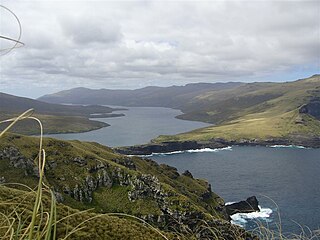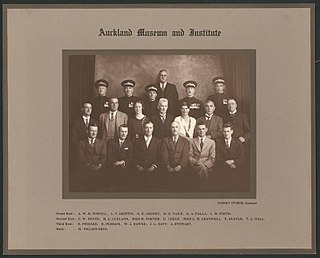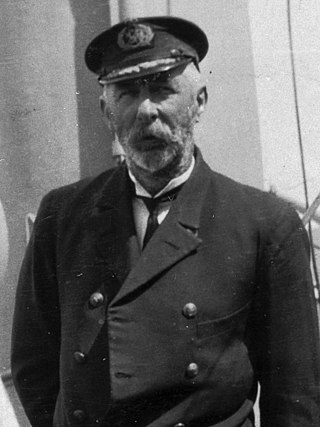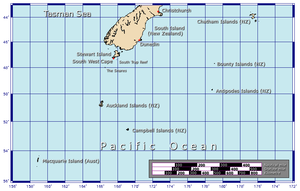
The Auckland Islands are an archipelago of New Zealand, lying 465 km (289 mi) south of the South Island. The main Auckland Island, occupying 460 km2 (180 sq mi), is surrounded by smaller Adams Island, Enderby Island, Disappointment Island, Ewing Island, Rose Island, Dundas Island, and Green Island, with a combined area of 570 km2 (220 sq mi). The islands have no permanent human inhabitants.

Auckland Island is the main island of the eponymous uninhabited archipelago in the Pacific Ocean. It is part of the New Zealand subantarctic area. It is inscribed in the UNESCO World Heritage list together with the other New Zealand Subantarctic Islands in the region.

Campbell Island / Motu Ihupuku is an uninhabited subantarctic island of New Zealand, and the main island of the Campbell Island group. It covers 112.68 square kilometres (43.51 sq mi) of the group's 113.31 km2 (43.75 sq mi), and is surrounded by numerous stacks, rocks and islets like Dent Island, Folly Island, Isle de Jeanette-Marie, and Jacquemart Island, the latter being the southernmost extremity of New Zealand. The island is mountainous, rising to over 500 metres (1,640 ft) in the south. A long fiord, Perseverance Harbour, nearly bisects it, opening out to sea on the east coast.

Adams Island is the second largest island of New Zealand's Auckland Islands archipelago.

Enderby Island is part of New Zealand's uninhabited Auckland Islands archipelago, south of mainland New Zealand. It is situated just off the northern tip of Auckland Island, the largest island in the archipelago.

Arthur William Baden Powell was a New Zealand malacologist, naturalist and palaeontologist, a major influence in the study and classification of New Zealand molluscs through much of the 20th century. He was known to his friends and family by his third name, "Baden".

Carnley Harbour is a large natural harbour in the south of the Auckland Islands, part of the New Zealand Subantarctic Islands. Formed from the drowned crater of an extinct volcano, the harbour separates the mainland of Auckland Island to the north, from the smaller Adams Island in the south. The harbour is sometimes referred to as the Adams Straits.

Cape Lovitt is the western most point of New Zealand. It is located on the west coast of Auckland Island, one of New Zealand's subantarctic outlying islands, 3 kilometres north of the mouth of Western Arm, a channel leading into Carnley Harbour and separating Auckland Island from Adams Island.
Gerald Stanley Clark was a New Zealand sailor, writer and ornithologist. He is notable for his ornithological research work on subantarctic islands and for his circumnavigation of Antarctica in his self-built yacht Totorore.

A castaway depot is a store or hut placed on an isolated island to provide emergency supplies and relief for castaways and victims of shipwrecks.

Port Ross is a natural harbour on Auckland Island in the Auckland Islands Group, a subantarctic chain that forms part of the New Zealand Outlying Islands.

John Peter Bollons was a New Zealand marine captain, naturalist and ethnographer. For many years he captained New Zealand government steamers, including the NZGSS Hinemoa, which undertook lighthouse work and patrols through New Zealand's subantarctic islands. Bollons Island, in the Antipodes Islands, is named after him. In 1928 he was appointed a Companion of the Imperial Service Order.
Grafton was a 56-ton schooner sailing out of Sydney during the 1860s that was wrecked on 3 January 1864 in the north arm of Carnley Harbour, Auckland Island, one of the New Zealand Subantarctic Islands, nearly 480 kilometres (300 mi) south of the South Island. Her castaway crew waited a year for a ship to come to their rescue, which, it soon became apparent, would not come. Six months later, three men decided to set out in a dinghy and managed to cross a distance of 450 kilometres (280 mi) to Stewart Island, 30 kilometres (20 mi) south of New Zealand's South Island. They then funded a rescue mission to pick up their remaining companions. The crew spent a total of 18 months on the sub-Antarctic island and, despite their ordeal, all survived.

The Sub-Antarctic Islands Scientific Expedition of 1907 was organised by the Philosophical Institute of Canterbury. The main aim of the expedition was to extend the magnetic survey of New Zealand by investigating Campbell Island and the Auckland Islands, but botanical, biological and zoological surveys were also conducted.

Thomas Musgrave was the captain of an Australian ship and later a lighthouse keeper, who was wrecked with the schooner Grafton in the subantarctic Auckland Islands, and cast away there for over 18 months.

The 1874 Transit of Venus Expedition to Campbell Island was an astronomical expedition by French scientists to observe the 9 December 1874 transit of Venus on subantarctic Campbell Island in the Southern Ocean some 600 km south of New Zealand. It was one of several such scientific expeditions from various countries sent around the world to observe the rare astronomical event.

Xanthorhoe orophylloides is a moth of the family Geometridae. It was first described by George Hudson in 1909 and is endemic to New Zealand. This species is found in the subantarctic islands including at the Auckland Islands and at Campbell Island.
Argaplana is a genus of land planarians, the only member of the tribe Argaplanini in the family Rhynchodeminae. It contains the sole species Argaplana ranuii. It is native to New Zealand.
SS Erlangen was a German cargo vessel that escaped from New Zealand at the beginning of the Second World War and travelled to Chile.














